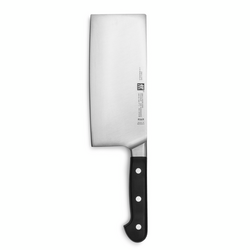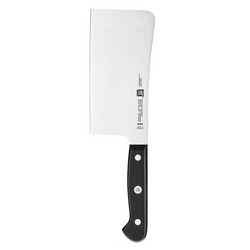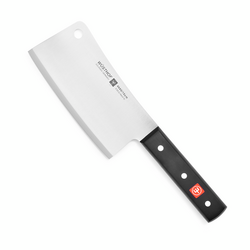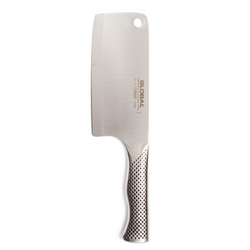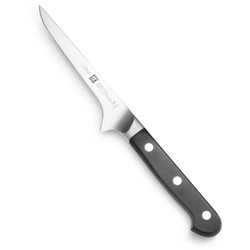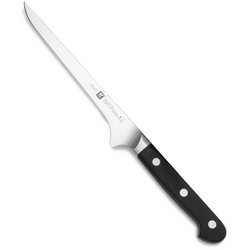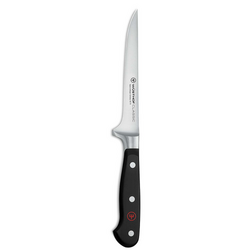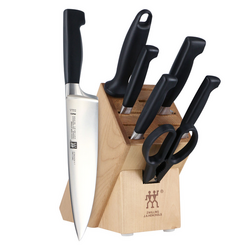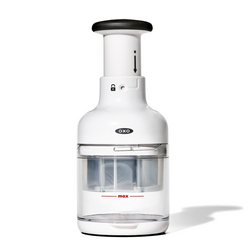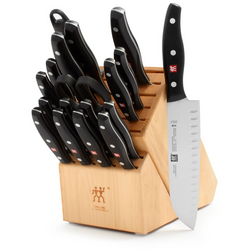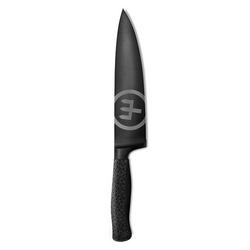-
(139)
The cleaver to end all cleavers. This heavy-duty knife offers the durability you want in a cleaver with the addition of ultimate comfort with the curved bolster. ...This cleaver isn't intimidating like some cleavers because it is comfortable to hold...
Pros: sharpness, sturdy, versatility
Add to Bag -
(29)
The Gourmet 6" cleaver is perfect for the home chef. Nice compact design makes it easy to handle, and less intimidating than some of the larger cleavers available. ...This is the perfect cleaver. Too many cleavers are heavy and rely on that weight to...
Pros: durable, long-lasting, comfortable handle
Add to Bag -
(14)
Great Cleaver...Great cleaver...I once read that a good cleaver is the best and most important single piece of cutlery in a kitchen.
Pros: versatile, great quality, love
Add to Bag -
(10)
Global cleaver...Nice cleaver
Pros: sharpness, build quality, strong
Add to Bag -
The Shun Premier Vegetable Cleaver, also known as a Chinese cleaver, is a versatile kitchen essential. Its wide, squared blade is perfect for slicing, dicing and chopping vegetables—especially larger ones like cabbage. Designed with Shun’s thinner blade...
Add to Bag
Kitchen Cleaver
A cleaver is a kitchen knife with a heavy blade and a flat edge. It is used for chopping, mincing, and cutting meat and other foods. These knives are often large and heavy, making them a popular choice for professional chefs. Here are some great options.
Kitchen Cleaver
Cleaver knives are not just practical—they’re also a thoughtful gift for anyone who loves to cook, from recent graduates setting up their first kitchen to experienced grill masters expanding their culinary toolkit. During the summer months, when outdoor cooking and fresh produce are in abundance, a quality cleaver makes it simple to portion ribs, break down squash, or prepare fruit platters for picnics and gatherings. The generous blade doubles as a scoop, making it easy to transfer chopped ingredients from cutting board to pot or grill. Many cooks find that once they add a cleaver to their kitchen, it quickly becomes indispensable, appreciated for its ability to handle both heavy-duty butchering and delicate slicing with equal ease. If you’re exploring new recipes or looking to elevate your knife collection, consider how a cleaver’s unique shape and heft can open up new possibilities in your cooking routine.
When choosing a kitchen cleaver, it’s important to consider the blade material, handle comfort, and intended use. Stainless steel blades offer durability and easy maintenance, while high-carbon steel can provide a sharper edge for precise cuts. A comfortable, well-balanced handle ensures safety and reduces fatigue during extended prep sessions. Cleavers come in a range of sizes, so think about the types of ingredients you’ll be working with most often. A larger blade is ideal for butchering and heavy chopping, while a more compact option may suit smaller kitchens or everyday vegetable prep. For those interested in exploring similar tools designed for chopping and dicing, take a look at our Kitchen Chopper selection to find the perfect match for your cooking style. With the right cleaver at your side, you’ll be ready to tackle any recipe with confidence and ease, making every meal a little more enjoyable to prepare.
Top Picks For Kitchen Cleaver
FAQ List
A kitchen cleaver is a type of knife that is designed for chopping and slicing through a variety of ingredients, including meats, vegetables, and fruits.
A kitchen cleaver can be used for a variety of tasks in the kitchen, including chopping vegetables, slicing meats, breaking down larger cuts of meat, and crushing garlic and ginger.
When choosing a kitchen cleaver, you want to look for a blade that is made from high-quality, durable materials, such as stainless steel or carbon steel. You also want to consider the weight and balance of the cleaver, as well as the size and shape of the blade.
Yes, a kitchen cleaver can be used for cutting through bones. However, you want to make sure that you choose a cleaver that is specifically designed for this purpose, as not all cleavers are suitable for cutting through bones.
To care for your kitchen cleaver, you should wash it by hand in warm, soapy water and dry it thoroughly after each use. You should also sharpen the blade regularly to ensure that it is always sharp and ready for use.

